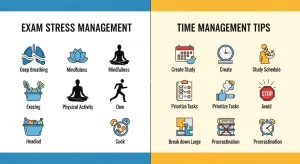Introduction
Starting your stock market investing journey can feel overwhelming, but with the right knowledge and approach, anyone can become a successful beginner investor. Whether you’re looking to build wealth for retirement, save for a major purchase, or simply grow your money over time, understanding investment basics is crucial for financial success.
This comprehensive guide will walk you through everything you need to know about investing for beginners, from basic concepts to practical strategies that will help you make informed decisions in the stock market.
What is Stock Market Investing?
Stock market investing involves purchasing shares of publicly-traded companies with the expectation that their value will increase over time. When you buy stocks, you’re essentially buying a small piece of ownership in that company. As the company grows and becomes more profitable, the value of your shares typically increases.
The beauty of learning how to invest in stocks lies in the potential for compound growth. Even small investments can grow significantly over time when you reinvest dividends and allow your money to compound.
How to Create a Personal Budget and Save Money
Key Benefits of Stock Market Investing
- Wealth building potential: Historically, stocks have outperformed most other investment vehicles over the long term
- Passive income: Many stocks pay dividends, providing regular income
- Liquidity: Stocks can be bought and sold easily during market hours
- Inflation protection: Stock investments often keep pace with or exceed inflation rates
Stock Market Basics Every Beginner Should Know
Before diving into investment strategies, it’s essential to understand these fundamental stock market basics:
1. Types of Stocks
Common Stocks: These give you voting rights in company decisions and potential dividend payments. Most beginner investors start with common stocks.
Preferred Stocks: These typically don’t include voting rights but offer more stable dividend payments and priority over common stockholders.
2. Market Capitalization
- Large-cap stocks: Companies worth over $10 billion
- Mid-cap stocks: Companies worth $2-10 billion
- Small-cap stocks: Companies worth under $2 billion
3. Investment Accounts
Understanding different account types is crucial for investing for beginners:
| Account Type | Tax Treatment | Best For |
|---|---|---|
| Taxable Brokerage | Pay taxes on gains/dividends | General investing, flexibility |
| 401(k) | Tax-deferred growth | Employer-sponsored retirement |
| IRA | Tax-deferred or tax-free growth | Individual retirement planning |
| Roth IRA | Tax-free withdrawals in retirement | Young investors, tax diversification |
7 Daily Habits for a More Productive Morning Routine
How to Start Investing in Stocks: A Step-by-Step Guide
Step 1: Set Your Investment Goals
Before learning how to invest in stocks, determine your objectives:
- Short-term goals (1-3 years): Emergency fund, vacation, car purchase
- Medium-term goals (3-10 years): Home down payment, education
- Long-term goals (10+ years): Retirement, wealth building
Step 2: Choose the Right Brokerage Account
Research different brokers based on:
- Commission fees and account minimums
- Available investment options
- Research tools and educational resources
- User interface and mobile app quality
Step 3: Determine Your Risk Tolerance
Stock market basics include understanding that all investments carry risk. Consider these factors:
- Your age and time horizon
- Financial stability and income
- Emotional comfort with market volatility
- Overall financial planning strategy
Step 4: Build Your Investment Portfolio
Diversification is key to successful stock market investing. Consider these approaches:
For Conservative Investors:
- 60% stocks, 40% bonds
- Focus on dividend-paying stocks
- Include index funds for instant diversification
For Moderate Investors:
- 70% stocks, 30% bonds
- Mix of growth and value stocks
- International exposure through global funds
For Aggressive Investors:
- 80-90% stocks, 10-20% bonds
- Growth stocks and emerging markets
- Higher allocation to small-cap stocks
Healthy Meal Prep Ideas for Busy Weekdays
Essential Investment Strategies for Beginners
Dollar-Cost Averaging
This investment strategy involves investing a fixed amount regularly, regardless of market conditions. It helps reduce the impact of market volatility and is perfect for beginner investors who want to start small.
Buy and Hold
This long-term approach focuses on purchasing quality stocks and holding them for years or decades. It’s based on the principle that the stock market generally trends upward over time.
Index Fund Investing
Index funds offer instant diversification and are ideal for those new to stock market investing. They track market indices like the S&P 500 and provide broad market exposure with low fees.
Value Investing
This strategy involves finding undervalued stocks trading below their intrinsic value. While more complex, it can be rewarding for dedicated beginner investors willing to do research.
Common Mistakes to Avoid
1. Emotional Investing
Don’t let fear or greed drive your decisions. Stick to your investment strategies and avoid panic selling during market downturns.
2. Lack of Diversification
Putting all your money in one stock or sector increases risk significantly. Build a well-diversified investment portfolio.
3. Trying to Time the Market
Even professional investors struggle with market timing. Focus on long-term wealth building rather than short-term gains.
4. Ignoring Fees
High fees can significantly impact your returns over time. Choose low-cost investment options when possible.
DIY Home Organization Hacks for Small Spaces
Building Your First Investment Portfolio
Start with these steps:
- Emergency Fund First: Before investing for beginners, ensure you have 3-6 months of expenses saved
- Start Small: Begin with amount you’re comfortable potentially losing
- Diversify Early: Use index funds or ETFs for instant diversification
- Automate Investments: Set up automatic transfers to maintain consistency
- Review Regularly: Rebalance your portfolio annually or when allocations drift significantly
Tools and Resources for New Investors
Investment Apps and Platforms
- Robinhood: Commission-free trading
- Fidelity: Comprehensive research tools
- Vanguard: Low-cost index funds
- Charles Schwab: Educational resources
Educational Resources
- Company annual reports (10-K filings)
- Financial news websites
- Investment podcasts and YouTube channels
- Books on investment basics and stock market investing
Frequently Asked Questions
How much money do I need to start investing in stocks?
Many brokers now offer zero minimum account balances, allowing you to start investing for beginners with as little as $1. However, having at least $1,000 provides better diversification options and helps minimize the impact of fees. The key is to start with an amount you can afford to lose and gradually increase your investments over time.
What’s the difference between stocks and bonds in my investment portfolio?
Stocks represent ownership in companies and typically offer higher potential returns but with greater volatility. Bonds are loans to companies or governments that provide more stable, predictable income but lower long-term returns. A balanced investment portfolio usually includes both to manage risk while pursuing growth.
How often should I check my investment portfolio?
While it’s natural to be curious about your investments, checking too frequently can lead to emotional decision-making. Most successful investors review their portfolios monthly or quarterly, focusing on long-term performance rather than daily fluctuations. Remember, stock market investing is a marathon, not a sprint.
How to Build a Capsule Wardrobe on a Budget
Conclusion: Start Your Investment Journey Today
Stock market investing doesn’t have to be intimidating. By understanding these investment basics and following proven investment strategies, you can begin building wealth and securing your financial future. Remember, the best time to start investing was yesterday, but the second-best time is today.
Start small, stay consistent, and focus on long-term goals. As you gain experience and confidence, you can expand your knowledge and refine your approach to stock market investing.
The journey of investing for beginners starts with a single step. Take that step today and begin building the investment portfolio that will help you achieve your financial dreams.
Ready to start your investment journey? Open a brokerage account with our recommended platform and get started with commission-free trading today.
Stock Market Learning Courses ( Free):
Financial News & Research Tools:
Budgeting + Investment Apps ( Free):











